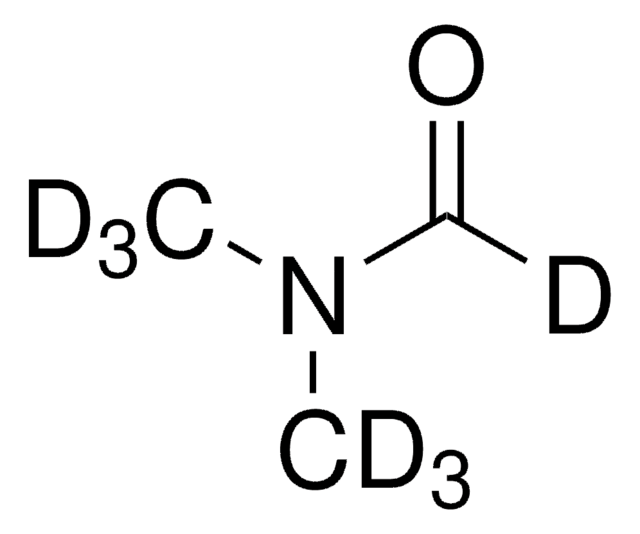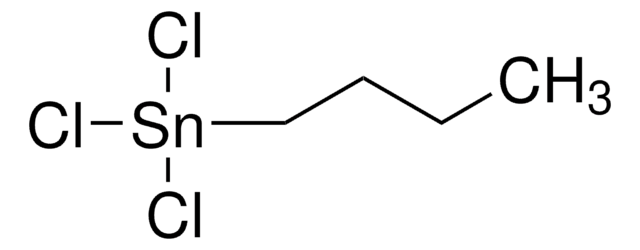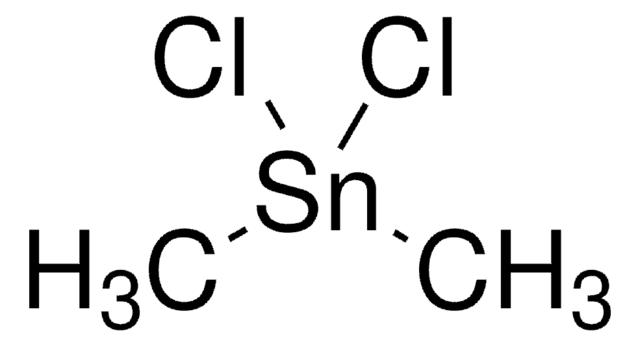277231
Phenyltin trichloride
98%
Synonyme(s) :
Trichlorophenylstannane
About This Item
Produits recommandés
Niveau de qualité
Essai
98%
Forme
liquid
Indice de réfraction
n20/D 1.585 (lit.)
pb
142-143 °C/25 mmHg (lit.)
Densité
1.839 g/mL at 25 °C (lit.)
Chaîne SMILES
Cl[Sn](Cl)(Cl)c1ccccc1
InChI
1S/C6H5.3ClH.Sn/c1-2-4-6-5-3-1;;;;/h1-5H;3*1H;/q;;;;+3/p-3
Clé InChI
UBOGEXSQACVGEC-UHFFFAOYSA-K
Catégories apparentées
Application
- In the preparation of organotin(IV) complexes as potent antimicrobial agents.
- As a reactant in the Stille coupling reaction catalyzed by peptide-templated Pd nanoparticles.
- As a tin (Sn) source in the synthesis of tin-doped TiO2 photoanodes applicable in dye-sensitized solar cells.
Mention d'avertissement
Danger
Mentions de danger
Classification des risques
Aquatic Acute 1 - Eye Dam. 1 - Skin Corr. 1B
Code de la classe de stockage
8A - Combustible corrosive hazardous materials
Classe de danger pour l'eau (WGK)
WGK 3
Point d'éclair (°F)
235.4 °F - closed cup
Point d'éclair (°C)
113 °C - closed cup
Équipement de protection individuelle
Faceshields, Gloves, Goggles, type ABEK (EN14387) respirator filter
Faites votre choix parmi les versions les plus récentes :
Déjà en possession de ce produit ?
Retrouvez la documentation relative aux produits que vous avez récemment achetés dans la Bibliothèque de documents.
Notre équipe de scientifiques dispose d'une expérience dans tous les secteurs de la recherche, notamment en sciences de la vie, science des matériaux, synthèse chimique, chromatographie, analyse et dans de nombreux autres domaines..
Contacter notre Service technique










